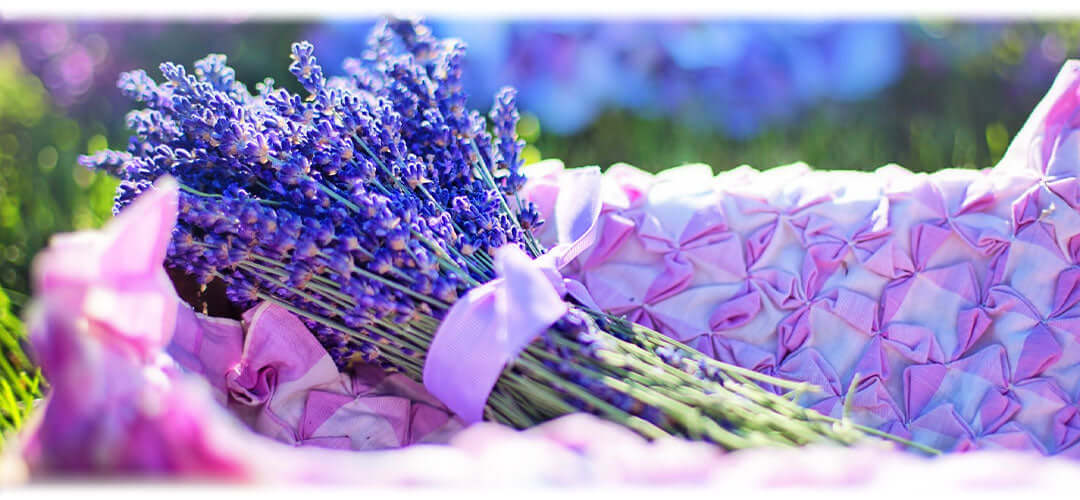
Using plant essences and fragrances to their full potential.
Plants have been used for medicinal purposes for thousands of years. Many modern pharmaceuticals utilise the therapeutic compound found within plants to create oral – tablets, capsules, and medicines – products to treat ailments.
Aromatherapy focuses on using the aromatic compounds of plants to provide complementary help to many physical and mental ailments.
• The Olfactory System
Olfaction, the proper term for the sense of smell, happens in the nose. As air enters the nose aroma molecules bind to hairs that line the nasal passage. The aroma compounds enter the body through olfactory cells, into the olfactory nerve fibre, up to the olfactory bulb, and then directly to the brain.
Our sense of smell plays a role in our memory, learning, and bonding. A baby’s sense of smell develops very early on in pregnancy, around 6 or 7 weeks. By the third trimester of pregnancy the baby can recognise the scent of its own amniotic fluid. Studies show that if the parent eats strongly flavoured foods during later stages of pregnancy babies will recognise the scent after birth. Babies learn, early on how to recognise the scent of their parent.
During pregnancy and childbirth, the olfactory bulb increases in plasticity, and demonstrates learning. The Olfactory Bulb lights up when exposed to the scent of the offspring. These mechanisms encourage us to use our sense of smell to develop deeper bonds with our children.
Individuals with degenerative brain conditions, such as Alzheimer’s and Dementia, experience a loss in their sense of smell as the condition progresses. The ability to distinguish and recognise smells deteriorates. Other mental health problems, such as depression, have also shown defects in the olfactory system. For some people with depression, scents may become less appealing.

• Methods of Application
Modern science has enabled us to identify categories of compounds found with essential oils. It is believed that these compounds can trigger physical and psychological reactions in the body. Aromatherapists will often blend several oils together. These blends will be used to provide synergistic effects, and holistic results.
Once blended, there are several methods that may be used to take advantage of the therapeutic properties.
- Steam Inhalation – This method allows the compounds to hit the olfactory cells directly. It is often used if someone needs immediate relief from a complaint, such as congested sinuses, or anxiety attacks.
- Dry inhalation - A convenient way to experience therapeutic effects while out and about. It’s often used to treat symptoms such as nausea and sickness.
- Diffusion – Using a diffuser around the home or the office allows you to experience the benefits throughout the day.
- Massage – This method allows the essential oil compounds to penetrate the skin as well as the nose.

• Therapeutic Benefits
Lily & Loaf essential oils are all organic. This means that the plants they are extracted from were grown without any chemical pesticides or fertilisers. You should use only organic essential oils for therapeutic purposes, as there is minimal risk of any toxins being present in the oil.
One plant can provide more than one essential oil, each with a different chemical make-up. Each of these oils may provide very different aromas and very different therapeutic benefits.
It is worth noting that different compounds move and react differently in air and water. These reactions can affect how rapidly the fragrance is received by the olfactory cells, and how long the fragrance lasts in the air. This is known as the note of a fragrance. Top notes evaporate rapidly in the air but are quicker to travel to the brain. Base notes evaporate much slower and linger for a longer time.
When preparing a therapeutic blend, essential oils with top notes will offer immediate relief to symptoms, whereas base notes may provide more sustained benefits.
All essential oils contain multiple therapeutic compounds; therefore, each oil may have more than one therapeutic benefit. However, most oils will have one or two dominant compounds which provide a primary action. Let us look at some of our oils, and their primary functional benefit.
• Bergamot
Bergamot provides a sweet, sharp, citrus aroma. This oil is a top note.
Like most citrus oils, Bergamot provides energising benefits. Unlike other citrus oils, Bergamot contains two compounds – linalool and linalyl acetate – which have grounding effects. This makes Bergamot an ideal oil for people who are anxious or lacking motivation.
Bergamot also contains a compound called limonene. This compound has been shown to have anti-inflammatory properties. This action is why you might find Bergamot in skin cleansing products. Limonene can be found in several citrus oils, such as lemon, which makes them great cleaning agents.
• Rosemary
Rosemary provides a strong, fresh, herbal aroma. This oil is a middle note.
This essential oil has become synonymous with aiding memory and is popular among students. The compound responsible for this is a-pinene. This compound has been shown to increase alertness and help the brain to retain memories more effectively.
Rich in compound cinde, Rosemary also provides analgesic pain relief and anti-inflammatory properties. Used in massage, it may provide relief for joint and muscular aches and pains.
• Lavender
Lavender is one of the most popular essential oils, it provides a fresh, floral, slightly fruity aroma. This oil is a top/middle note.
It is widely known that lavender helps to aid relaxation and sleep, and it is often found in bath oils and massage lotions. Lavender is high in two compounds, linalool and linalyl acetate, which have grounding and relaxing properties. As discussed earlier, Bergamot also contains these compounds. Lavender contains a much higher concentration of these compounds but does not contain the uplifting compounds of Bergamot. Making lavender an ideal choice to help aid relaxation in those suffering from stress or insomnia.
Lavender contains anti-microbial compounds too. Lavender makes an ideal room spay during illness, cleansing the air without stimulating the occupant.
• Tea Tree
Another popular oil. Tea Tree has a strong, warm, spicy, herbal aroma. It is a middle note.
Tea tree is probably the most famous cleansing essential oil, it is well known for having antiseptic, antiviral and antifungal properties. The compounds terpinene-4-ol and a-terpinene provide these actions. This compound has demonstrated that it may increase the activity of white blood cells, the cells responsible for fighting germs and foreign invaders. Tea Tree is often used to help manage athletes foot and yeast infections. It can be added to a foot bath for targeted support.
• Peppermint
Peppermint provides a fresh, woody, spicy/herbal aroma. It is a base note, so can remain in the air for a long time.
Peppermint has a high menthol content. Menthol is reported to be an effective decongestant and is often used to improve nasal breathing. It is usually found in nasal inhalers and is ideal for steam inhalation to relieve the symptoms of colds. This compound also provides excellent cooling effects and will often be found in post-workout rubs and sprays to relieve menopausal flushes.
Check out this link to find out more:
Disclaimer:
Information and other content provided in Lily & Loaf blogs should not be construed as medical advice and should not be considered a substitute for professional medical expertise. If you have any medical concerns, you should consult with your health care provider.


